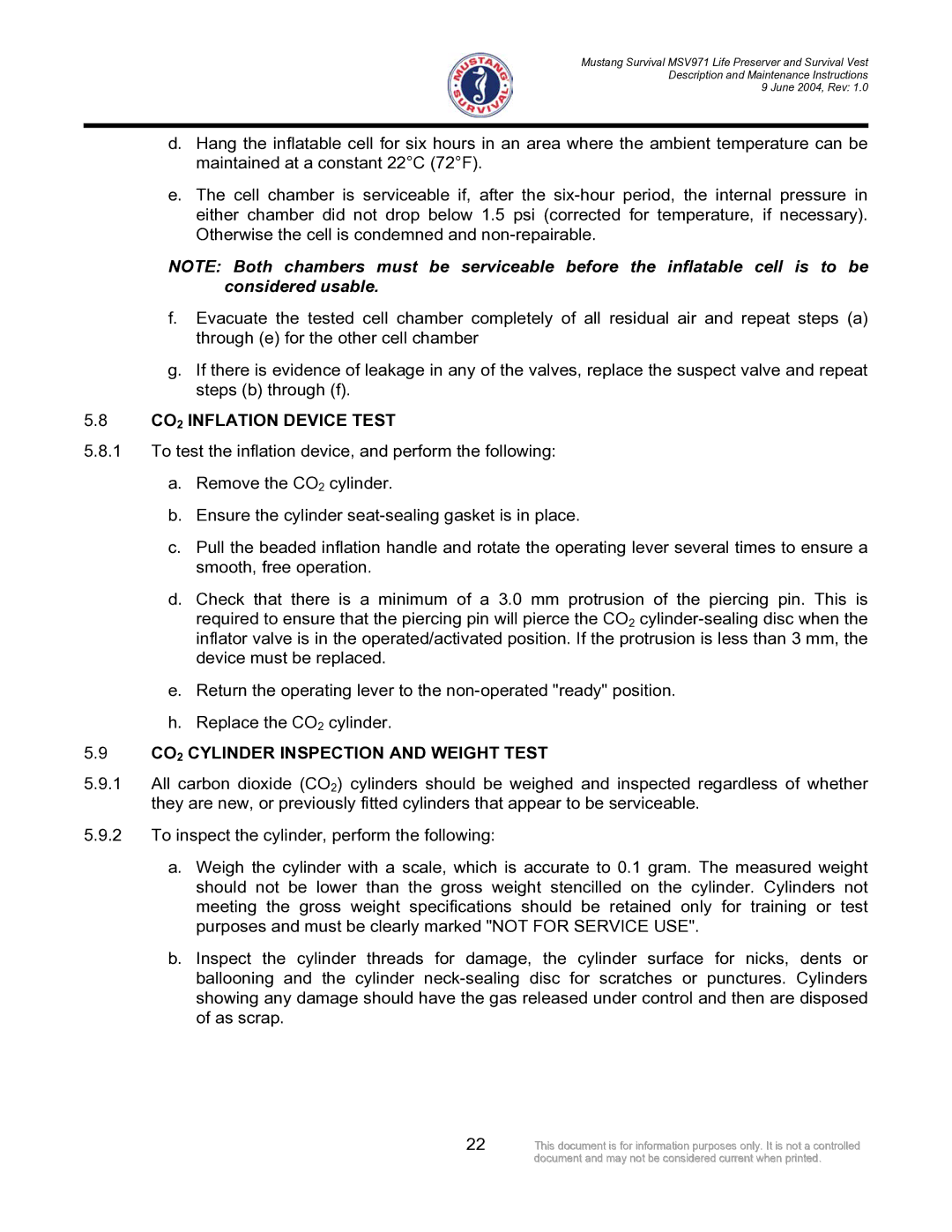
Mustang Survival MSV971 Life Preserver and Survival Vest
Description and Maintenance Instructions
9 June 2004, Rev: 1.0
d.Hang the inflatable cell for six hours in an area where the ambient temperature can be maintained at a constant 22°C (72°F).
e.The cell chamber is serviceable if, after the
NOTE: Both chambers must be serviceable before the inflatable cell is to be considered usable.
f.Evacuate the tested cell chamber completely of all residual air and repeat steps (a) through (e) for the other cell chamber
g.If there is evidence of leakage in any of the valves, replace the suspect valve and repeat steps (b) through (f).
5.8CO2 INFLATION DEVICE TEST
5.8.1To test the inflation device, and perform the following:
a.Remove the CO2 cylinder.
b.Ensure the cylinder
c.Pull the beaded inflation handle and rotate the operating lever several times to ensure a smooth, free operation.
d.Check that there is a minimum of a 3.0 mm protrusion of the piercing pin. This is required to ensure that the piercing pin will pierce the CO2
e.Return the operating lever to the
h.Replace the CO2 cylinder.
5.9CO2 CYLINDER INSPECTION AND WEIGHT TEST
5.9.1All carbon dioxide (CO2) cylinders should be weighed and inspected regardless of whether they are new, or previously fitted cylinders that appear to be serviceable.
5.9.2To inspect the cylinder, perform the following:
a.Weigh the cylinder with a scale, which is accurate to 0.1 gram. The measured weight should not be lower than the gross weight stencilled on the cylinder. Cylinders not meeting the gross weight specifications should be retained only for training or test purposes and must be clearly marked "NOT FOR SERVICE USE".
b.Inspect the cylinder threads for damage, the cylinder surface for nicks, dents or ballooning and the cylinder
22 | This document is for information purposes only. It is not a controlled |
| document and may not be considered current when printed. |
